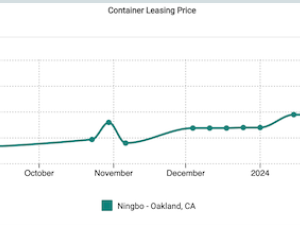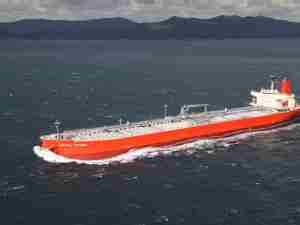A three-story casino barge now rests askew on land occupied two weeks earlier by a bustling container terminal at the Port of Gulfport - perhaps an omen of dramatic changes to come.
According to some industry experts, that wind-blown relocation could suggest permanent impacts as the shipping industry looks to rebound from Hurricane Katrina's wrath.
In separate interviews with the American Journal of Transportation, several top industry observers offered views on the prospective long-range impacts of the worst US natural disaster - views that include the possibility that some damaged port facilities may not be rebuilt but rather replaced by more remunerative uses of waterfront property, while shipping activity shifts to load centers elsewhere.
Philip A. Crannell Jr., West Palm Beach, FL-based senior vice president and director of the ports and maritime group of CH2M Hill Inc., is among those who see post-hurricane "shakeout" spurring port rationalization.
"Certain ports are going to migrate toward getting out of the port business," said Crannell, who has led teams responsible for expansion and redevelopment projects at more than 30 US and Caribbean ports over the past 25 years. While declining to cite Gulfport specifically, Crannell added that non-maritime uses may be likely to generate more local revenue than port facilities in some cases. (Before the storm, revenue gleaned through a pair of casino leases was garnering the Mississippi port $10 million a year - about half its annual revenue.)
"Real estate has reached a point of obsolescence as far as maritime use," Crannell said. He said decisions not to rebuild certain ports will speed a trend toward mixed-use waterfronts in some cities while the business of shipping becomes centered at fewer, larger ports.
John Martin, president of Lancaster, PA-based Martin Associates, who counts several Gulf ports among the hundreds for which he has conducted planning and economic impact studies, asks, "In the long term, could there be a total restructuring of the port system in the Gulf? I don't know.
"On the issue of Gulfport, it's just devastated. Nothing is there," Martin said. "How will we rebuild these ports?"
Bruno-Elias Ramos, principal in charge of Coral Gables, FL-based BEA International Inc., which specializes in port facility design, said key issues include whether Federal Emergency Management Agency funds will be used for port rebuilding and whether FEMA will take the risk of underwriting flood insurance for rebuilt facilities.
Ramos said the impacts already being felt on the cruise industry are likely to affect cargo activity as well. Industry leader Carnival Cruise Lines has moved a combined five ships that had sailed from Gulfport or New Orleans. Two of those will now sail from Galveston and three others are under six-month FEMA charter for use as housing for storm refugees. He said he believes New Orleans' tourist appeal cannot be expected to recover for at least five years. During that time no major cruise line is expected to make a major commitment there. Loss of cruise revenue could be a significant blow for the port.
Gulf port leaders maintaining confidence
In contrast to some of the consultants' comments, port leaders in the Gulf region are maintaining confidence. Within a week or two after Katrina passed, several ports were well along in recovery and a number had reopened on at least a limited basis. Where electrical power was lacking, huge generators were being put in place, and, to varying degrees, some labor was returning.
Gary LaGrange, president and chief executive officer of the Port of New Orleans, was talking of the comeback of a New Orleans port that will be "bigger, better and more competitive than ever."
Five days after the storm passed, Don Allee, executive director and chief executive officer of the Mississippi State Port Authority at Gulfport, talked of rebuilding. In the same dispatch he detailed annihilation, including cargo strewn for miles









